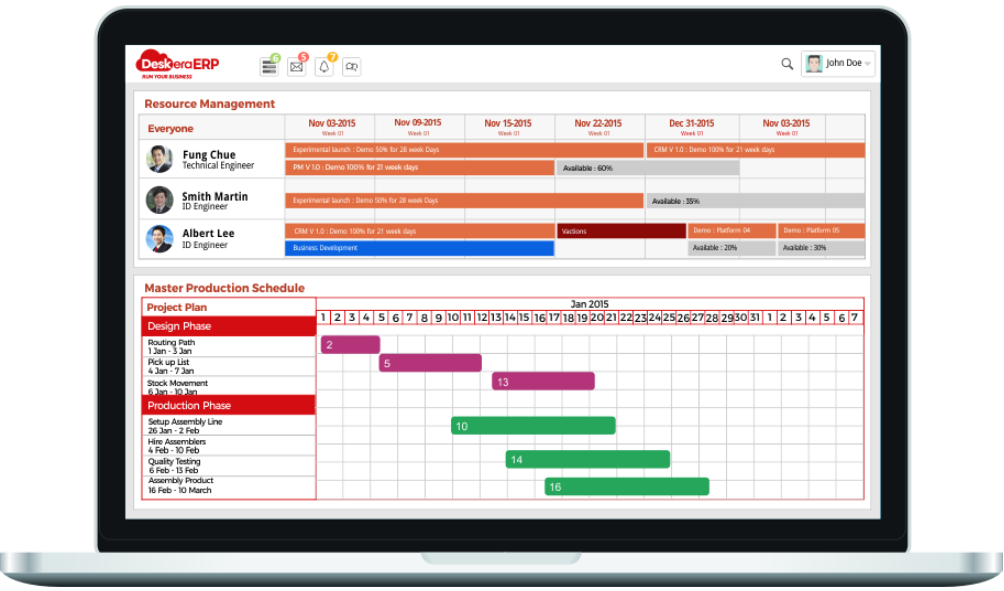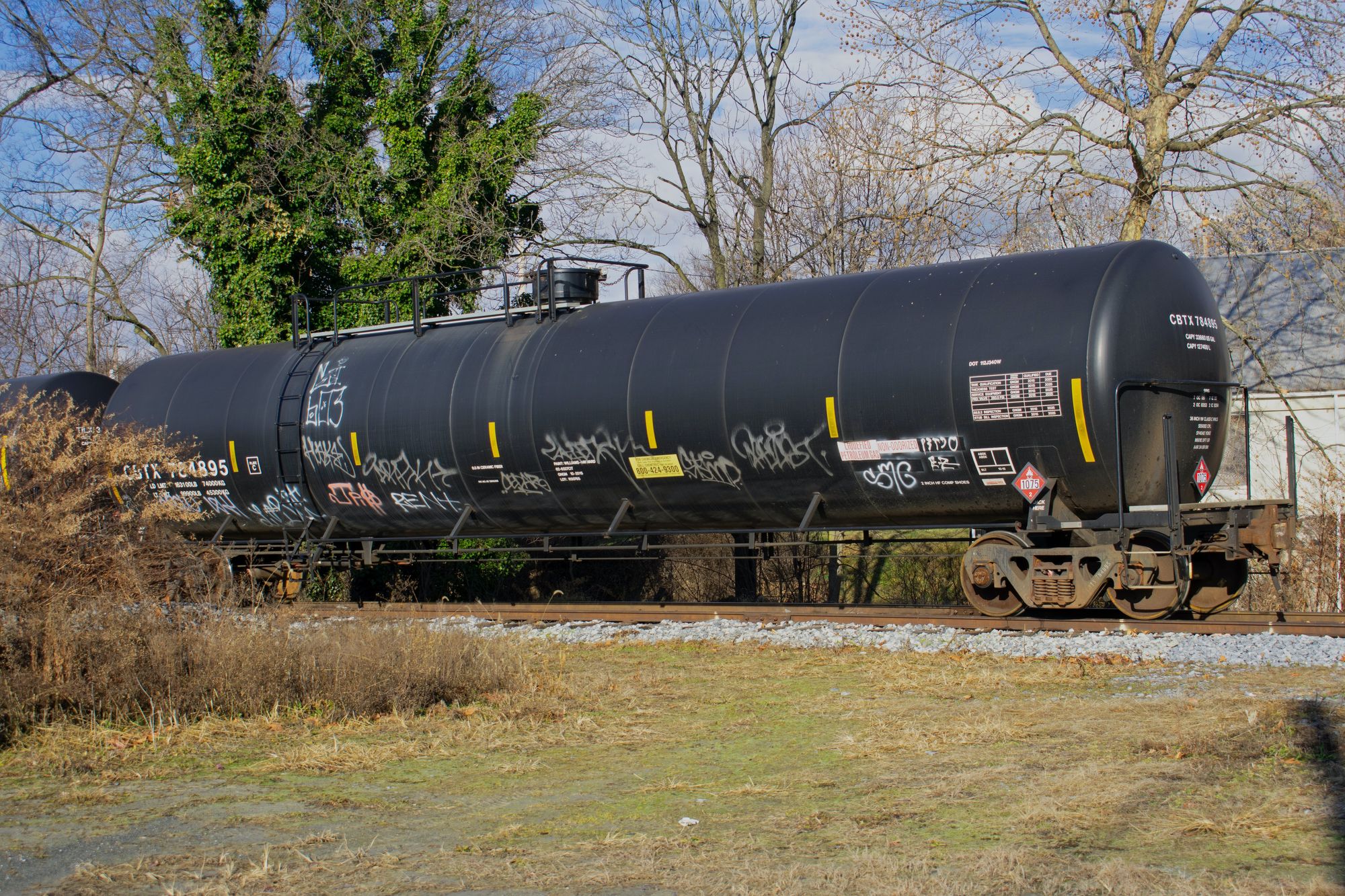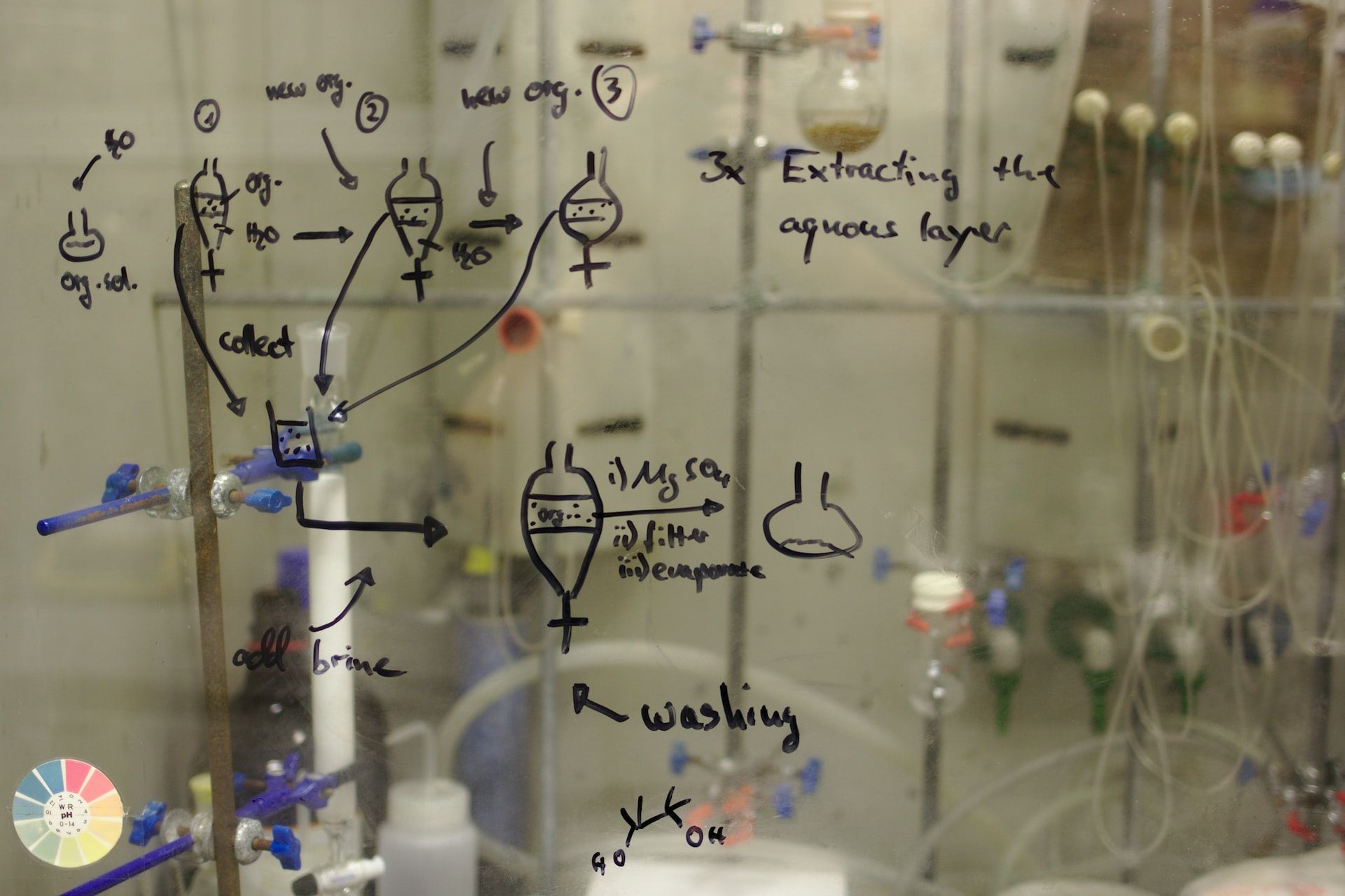According to a survey conducted by the NPMA, 89% of pest control professionals use some form of electronic monitoring or tracking to evaluate the effectiveness of their treatments. This technology can help provide data on pest activity levels and identify areas requiring additional attention.
As the demand for pest control products and services continues to grow, so does the need for manufacturers to produce effective solutions that keep pests at bay. But how can we measure the effectiveness of these products and services?
After all, simply using a pesticide does not guarantee that pests will be completely eliminated, and ineffective pest control can have severe consequences for human health and the environment.

In this article, we'll explore some standard metrics for measuring pest control effectiveness, discuss the factors that can affect the efficacy of pest control, and provide tips for conducting regular evaluations to ensure that your pest control measures are working as intended.
- Significance of Measuring Effectiveness in Pest Control Manufacturing
- Factors Affecting Pest Control Effectiveness
- Standard Metrics for Measuring Pest Control Effectiveness
- Conducting Pest Control Effectiveness Evaluations
- Improving Pest Control Effectiveness
- ERP And MRP Systems to Boost Pest Control Manufacturing
- How can Deskera Help You?
- Key Takeaways
- Related Articles
Significance Of Measuring Effectiveness In Pest Control Manufacturing
Measuring the effectiveness of pest control measures is of utmost importance in pest control manufacturing for several reasons.
Effective pest control measures are critical to ensuring the safety of people, animals, and the environment. Improper use of pesticides or ineffective pest control methods can pose significant health and environmental risks.
Pest infestations can cause significant financial losses for individuals and businesses, including damage to property and loss of crops or stored products. Effective pest control measures can help minimize these losses.
Customers rely on pest control manufacturers to provide effective solutions that eliminate pests and prevent infestations. Measuring the effectiveness of pest control measures can help manufacturers identify areas where they can improve their products or services and enhance customer satisfaction.
Pest control manufacturers must comply with rules set by government agencies such as the Environmental Protection Agency (EPA). These regulations often require manufacturers to demonstrate the effectiveness of their products or services before they can be approved for use.
Effective pest control measures can help reduce the number of pesticides and other chemicals released into the environment. By measuring the effectiveness of pest control measures, manufacturers can identify areas where they can reduce their use of chemicals while still achieving the desired level of pest control.
Factors Affecting Pest Control Effectiveness
Several factors can affect the effectiveness of pest control measures. Understanding these factors is essential for manufacturers to develop effective pest control solutions. Here are some common elements:
Type of Pest
Different pests have unique behaviors, life cycles, and environmental requirements. Therefore, other pest control methods may be required to control different pests effectively.
Environmental Conditions
Environmental factors such as temperature, humidity, and lighting can significantly impact the effectiveness of pest control measures. For example, some pests thrive in warm and humid environments, while others prefer cooler and drier conditions.
Here are some ways in which environmental conditions can affect pest control effectiveness:
- Temperature: The temperature can influence the behavior and reproductive cycles of pests. For example, cockroaches and other warm-blooded insects are more active in warmer temperatures, while rodents are more active in cooler temperatures. Thus, it is essential to consider the temperature when developing pest control solutions to ensure that the chosen method is effective for the specific type of pest.
- Humidity: The level of humidity can also impact pest behavior. Some pests, such as silverfish and booklice, thrive in high humidity environments, while others, such as termites, require a certain level of moisture to survive. This means that pest control solutions must take into account the humidity levels in the environment where the pests are present.
- Weather conditions: Weather conditions such as rain, wind, and snow can also impact pest behavior and the efficacy of pest control measures. For example, rain can wash away pesticides, making them less effective, while strong winds can disperse insecticide sprays, reducing their efficacy.
- Habitat: The habitat of pests can also impact the effectiveness of pest control measures. For example, some pests, such as rats and mice, are known to burrow and nest in walls and other hidden areas. This means that pest control solutions must be tailored to the specific habitat of the pests to ensure their effectiveness.
Type of Pesticide
The type of pesticide used can impact its effectiveness in controlling pests. Some pesticides are more effective against specific types of pests, while others may have broader efficacy. Additionally, some pests may have developed resistance to certain pesticides, rendering them ineffective.
Here are some ways in which the type of pesticide can affect pest control effectiveness:
- Target pest: Different types of pesticides are designed to target specific types of pests. For example, insecticides are used to control insect pests, while rodenticides are used to control rodents. Using the wrong type of pesticide can be ineffective in controlling the target pest.
- Mode of action: Pesticides work by interfering with the biological processes of pests. Some pesticides work by disrupting the nervous system of pests, while others work by interfering with their reproductive systems or metabolism. The mode of action of the pesticide can impact its effectiveness in controlling pests.
- Residual activity: Some pesticides have longer residual activity than others. Residual activity refers to the length of time that the pesticide remains active after it has been applied. Pesticides with longer residual activity can provide longer-term control of pests.
- Environmental impact: Different types of pesticides can have different environmental impacts. Some pesticides may be more toxic to non-target organisms, such as beneficial insects and wildlife, while others may have less impact. Manufacturers must consider the environmental impact of the pesticides they use in pest control.
- Pesticide resistance: Pests can develop resistance to certain types of pesticides over time. If a pest population has developed resistance to a particular pesticide, it may be ineffective in controlling the pest. Manufacturers must be aware of the potential for pesticide resistance and use alternative pesticides or methods when necessary.
Application Method and Timing
The method and timing of pesticide application can affect its effectiveness. For example, applying pesticides during periods of high pest activity or in the early stages of pest infestation may be more effective than waiting until the infestation is severe.
Expertise of Pest Control Personnel
The skills, knowledge, and experience of pest control personnel can impact the effectiveness of pest control measures. Proper training and education can help ensure that personnel are equipped with the knowledge and skills necessary to implement effective pest control solutions.
By taking these factors into consideration, manufacturers can ensure that their pest control solutions are effective in controlling pests and minimizing the risk of infestations.
Common Metrics For Measuring Pest Control Effectiveness
Measuring pest control effectiveness is essential for ensuring that the pest control measures being implemented are working as intended. There are several common metrics for measuring pest control effectiveness, including:
Pest Population Density
Measuring pest population density before and after implementing pest control measures can provide insight into the effectiveness of the measures. If the pest population density has decreased significantly after implementing pest control measures, it is an indication that the measures are effective.
Pest Activity
Measuring pest activity, such as the number of pests caught in traps, can also provide insight into the effectiveness of pest control measures. If the number of pests caught in traps has decreased after implementing pest control measures, it is an indication that the measures are effective.
Damage caused by Pests
Measuring the damage caused by pests before and after implementing pest control measures can also provide insight into their effectiveness. If the amount of damage caused by pests has decreased after implementing pest control measures, it is an indication that the measures are effective.
Pesticide Use
Measuring pesticide use before and after implementing pest control measures can also provide insight into their effectiveness. If pesticide use has decreased after implementing pest control measures, it is an indication that the measures are effective in controlling pests.
Customer Satisfaction
Measuring customer satisfaction with pest control services can also be an indicator of their effectiveness. If customers report fewer pest problems after implementing pest control measures, it is an indication that the measures are effective.
Compliance with Regulations
Compliance with pest control regulations can also be a metric for measuring effectiveness. If pest control measures are in compliance with regulations and standards, it is an indication that the measures are effective in controlling pests.
Conducting Pest Control Effectiveness Evaluations
Evaluating the effectiveness of pest control measures is important for ensuring that they are working as intended and for identifying any potential issues that may need to be addressed. Here are some steps you can take to conduct a pest control effectiveness evaluation:
- Set clear goals: Before beginning the evaluation, it is important to establish clear goals for what you hope to achieve. This might include reducing the number of pests in a particular area, preventing the spread of disease, or reducing the need for chemical pesticides.
- Choose appropriate metrics: Depending on your goals, you will need to choose appropriate metrics to measure the effectiveness of your pest control measures. This might include tracking the number of pests caught or killed, monitoring changes in the population over time, or conducting surveys to assess pest activity.
- Establish a baseline: To evaluate the effectiveness of your pest control measures, it is important to establish a baseline level of pest activity before any treatments are applied. This will provide a point of comparison for measuring changes in pest activity after treatment.
- Conduct regular monitoring: Regular monitoring is essential for assessing the effectiveness of pest control measures over time. This might involve conducting regular inspections, setting up traps or bait stations, or using other monitoring methods to track pest activity.
- Analyze data and adjust treatments: As you collect data on pest activity and the effectiveness of your control measures, it is important to analyze this data and make adjustments to your treatments as needed. This might involve changing the type of treatment used, adjusting the frequency or intensity of treatments, or making changes to the environment to reduce pest activity.
- Communicate results: Finally, it is important to communicate the results of your pest control effectiveness evaluations to stakeholders, including customers, employees, and regulatory agencies. This can help to build trust and demonstrate the effectiveness of your pest control measures.
Improving Pest Control Effectiveness
Improving pest control effectiveness involves implementing measures that will help prevent and control pest infestations more effectively. Here are some ways to improve pest control effectiveness:
Conduct a thorough Inspection
A thorough inspection of the property will help to identify areas where pests may be entering or hiding. This will allow you to develop a more targeted pest control plan that addresses specific areas of concern.
Implement Preventative Measures
Implementing preventative measures such as sealing cracks and gaps, using screens on windows and doors, and installing door sweeps can help to prevent pests from entering the property in the first place.
Use Integrated Pest Management (IPM)
IPM is a holistic approach to pest control that focuses on preventing pest infestations and minimizing the use of pesticides. This approach includes regular monitoring, using non-chemical control methods, and only using pesticides when necessary.
Train employees
Providing training to employees on pest prevention and control can help to create a culture of pest control awareness in the workplace. Employees can be trained to identify pest problems, report them promptly, and take action to prevent infestations.
Use the Right Products
Using the right products for the type of pest infestation can improve pest control effectiveness. It is important to choose products that are effective and safe for humans and the environment.
Regularly Maintain the Property
Regular maintenance of the property can help to prevent pest infestations. This includes cleaning up food debris, fixing leaky pipes, and maintaining a clean and clutter-free environment.
Work with a Professional Pest Control Company
Hiring a professional pest control company can ensure that pest control measures are implemented effectively and safely. A professional company will have the knowledge and experience to identify pest problems and develop an effective pest control plan.
ERP And MRP Systems To Boost Pest Control Manufacturing
Enterprise Resource Planning (ERP) and Material Requirements Planning (MRP) systems can be used to boost pest control manufacturing by improving efficiency, reducing costs, and increasing productivity. Here are some ways that these systems can be used:
- Inventory Management: ERP and MRP systems can be used to manage inventory levels of raw materials, finished products, and supplies. This will ensure that the company has enough stock on hand to meet demand while minimizing the amount of inventory that is tied up in storage.
- Planning and Scheduling: These systems can be used to plan and schedule production runs, ensuring that the right materials are available when needed, and that production runs are optimized to reduce downtime and maximize productivity.
- Quality Control: ERP and MRP systems can be used to track and monitor quality control processes. This will ensure that products meet or exceed the required standards and reduce the number of product defects or recalls.
- Financial Management: These systems can also be used to manage financial transactions and processes such as accounts receivable and payable, billing, and invoicing. This will help the company to manage cash flow, reduce costs, and improve financial reporting.
- Supply Chain Management: ERP and MRP systems can be used to manage the entire supply chain, from sourcing raw materials to delivering finished products to customers. This will help to optimize the supply chain, reduce costs, and improve delivery times.
How can Deskera Help You?
Deskera ERP and MRP systems help you to keep your business units organized. The system's primary functions are as follows:
- Keep track of your raw materials and final items inventories
- Control production schedules and routings
- Keep a bill of materials
- Produce thorough reports
- Make your own dashboards

Deskera's integrated financial planning tools enable investors to better plan and track their investments. It can assist investors in making faster and more accurate decisions.
Deskera Books allows you to better manage your accounts and finances. Maintain good accounting practices by automating tasks like billing, invoicing, and payment processing.
Deskera CRM is a powerful solution that manages your sales and helps you close deals quickly. It not only enables you to perform critical tasks like lead generation via email, but it also gives you a comprehensive view of your sales funnel.
Deskera People is a straightforward tool for centralizing your human resource management functions.
Key Takeaways
- Measuring the effectiveness of pest control manufacturing is crucial for ensuring that the company is providing high-quality pest control solutions to its customers.
- By establishing clear goals, choosing appropriate metrics, conducting regular monitoring, analyzing data, and communicating results, companies can evaluate the effectiveness of their pest control measures and make improvements where necessary.
- Implementing measures such as conducting thorough inspections, using preventative measures, implementing integrated pest management, training employees, using the right products, regularly maintaining the property, and working with professional pest control companies can also help to boost pest control manufacturing effectiveness.
- Additionally, using ERP and MRP systems can help to optimize operations, reduce costs, and improve productivity.
- By implementing these strategies, pest control manufacturers can provide effective solutions to their customers and ultimately improve their bottom line.
Related Articles










